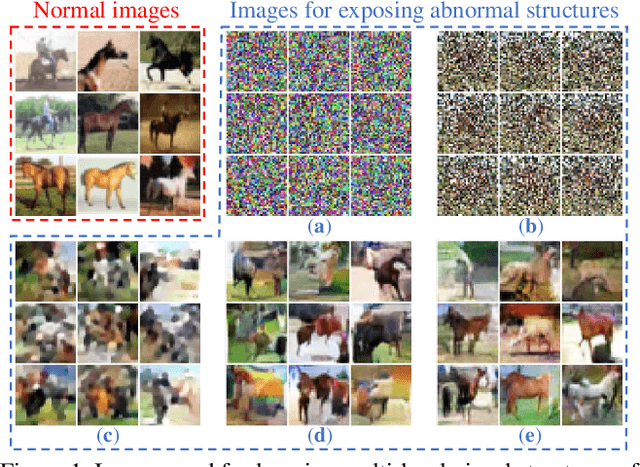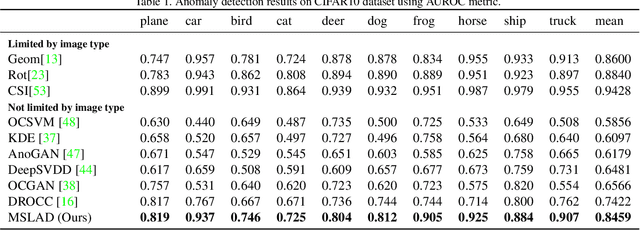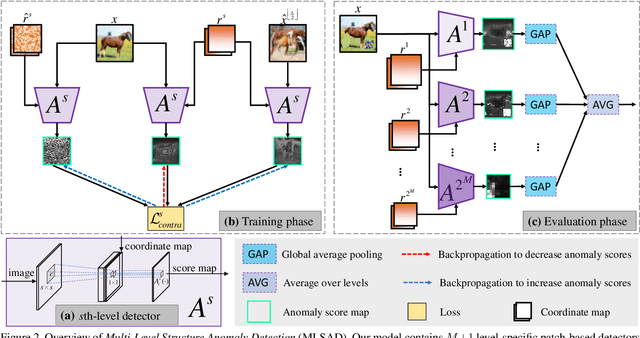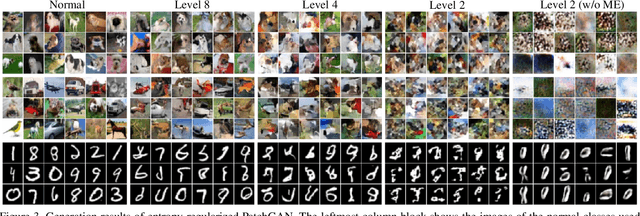Unsupervised Learning of Multi-level Structures for Anomaly Detection
Paper and Code
Apr 25, 2021



The main difficulty in high-dimensional anomaly detection tasks is the lack of anomalous data for training. And simply collecting anomalous data from the real world, common distributions, or the boundary of normal data manifold may face the problem of missing anomaly modes. This paper first introduces a novel method to generate anomalous data by breaking up global structures while preserving local structures of normal data at multiple levels. It can efficiently expose local abnormal structures of various levels. To fully exploit the exposed multi-level abnormal structures, we propose to train multiple level-specific patch-based detectors with contrastive losses. Each detector learns to detect local abnormal structures of corresponding level at all locations and outputs patchwise anomaly scores. By aggregating the outputs of all level-specific detectors, we obtain a model that can detect all potential anomalies. The effectiveness is evaluated on MNIST, CIFAR10, and ImageNet10 dataset, where the results surpass the accuracy of state-of-the-art methods. Qualitative experiments demonstrate our model is robust that it unbiasedly detects all anomaly modes.
 Add to Chrome
Add to Chrome Add to Firefox
Add to Firefox Add to Edge
Add to Edge